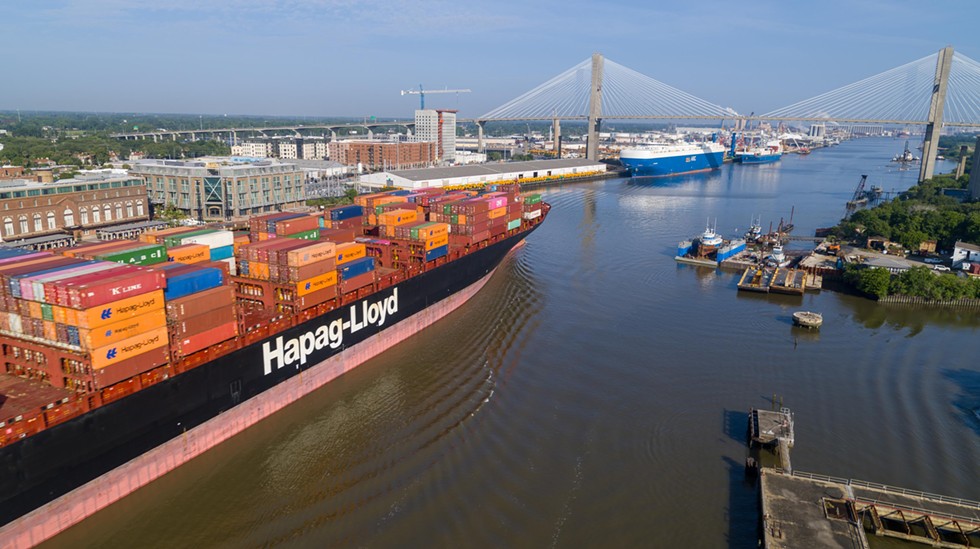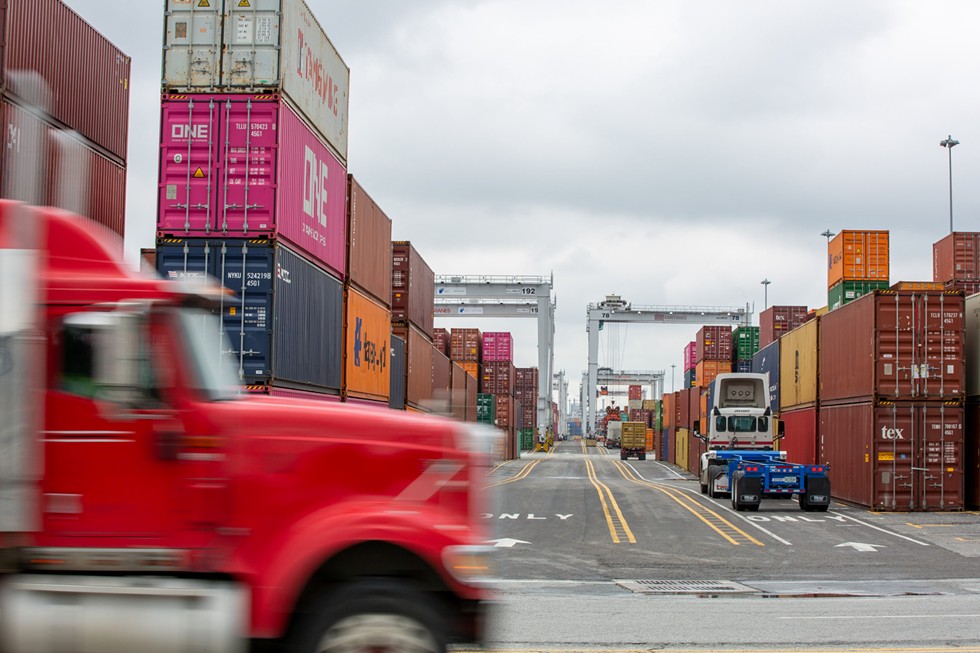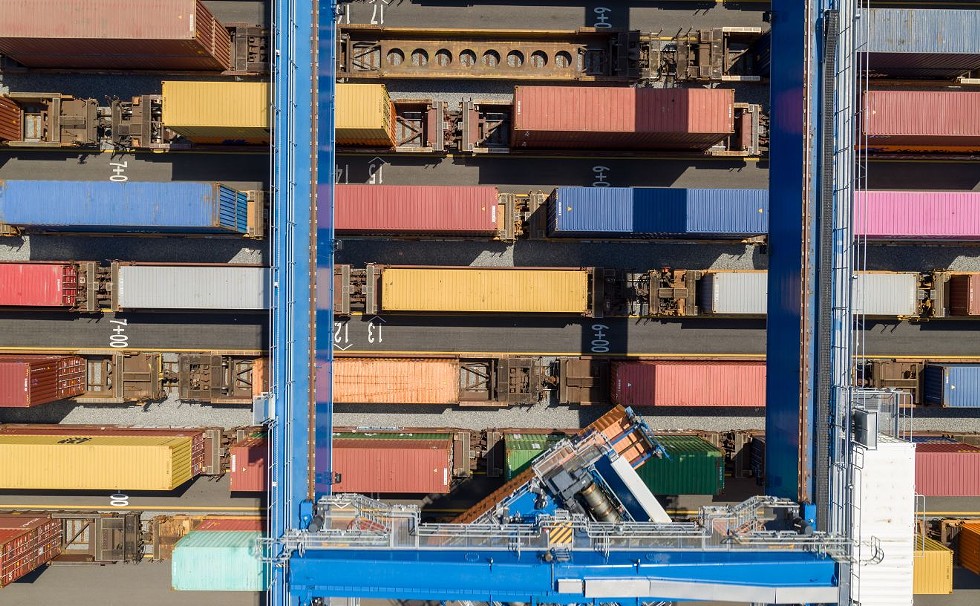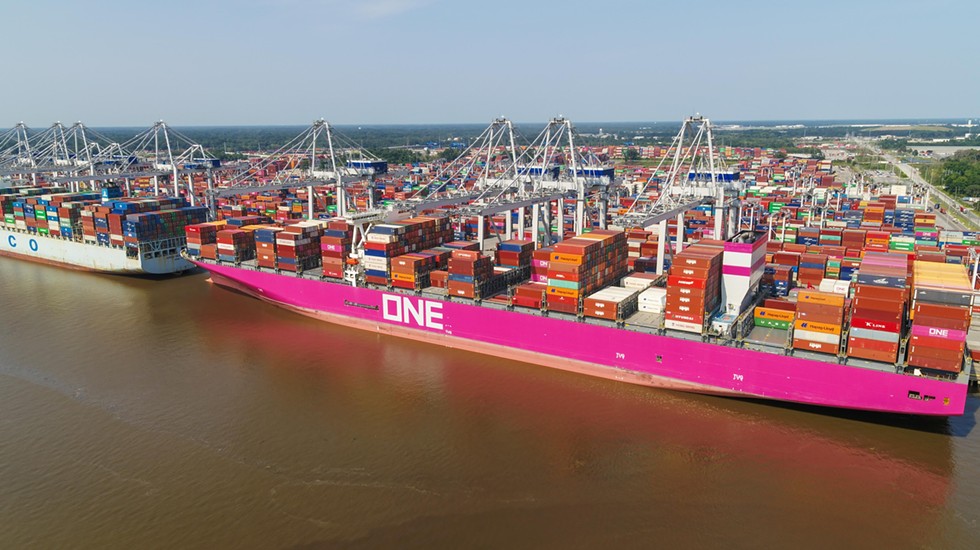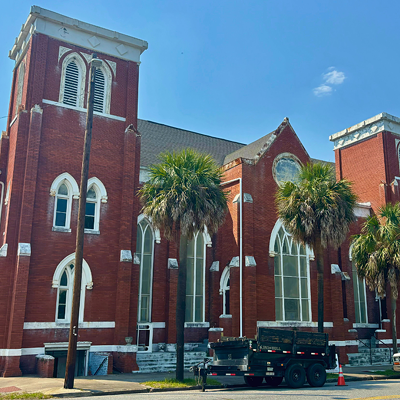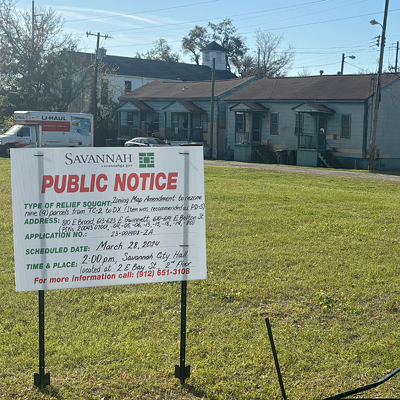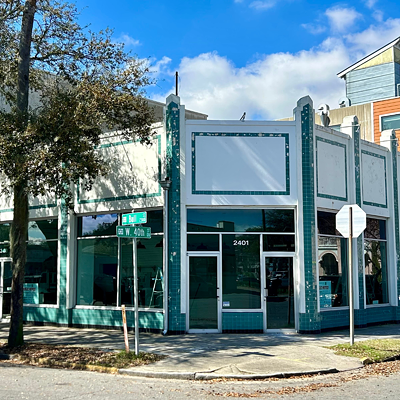You don’t have to go to the Port of Savannah to appreciate the massive facility’s impact on the city.
You can literally feel its long history as a gateway to international trade by taking a walk downtown by the Savannah River. Evidence is right at your feet.
“A lot of folks who come and go up and down River Street never pay attention to the cobblestones unless they tripped over them,” Lee Beckmann said.
Beckmann is the Georgia Ports Authority’s General Manager of Community and Governmental Affairs. It’s a long title, one he’s held for more than 20 years, that boils down to being a liaison to state agencies, the public and public servants to explain what the GPA does.
The Savannah native has an appreciation for local history and how his hometown came to be. Settled on a bluff along the river for practical and strategic reasons, Savannah is a port city.
“As Georgia’s first city, that connection to the water is the basis of our origin story as a state,” Beckmann said.
This is where the cobblestones come in. Wooden vessels sailing from Europe to collect cargo in Savannah used ballast stones to stay upright in the water. The stones were removed at the port and replaced by commodities being exported from Georgia.
“So that’s where those cobblestones came from, and it’s that connection to the world that I think folks kind of take for granted now,” Beckmann said.
The ships have changed, of course, and grown exponentially, and so has the port, which today boasts of being the fastest-growing container terminal in the United States. About 92 percent of its business is containers.
Savannah is the busiest container port in the Southeast, second on the East Coast to New York/New Jersey and third in the country, with Los Angeles/Long Beach, Calif., atop the list.
The Port of Savannah moves about 14,000 containers by truck on an average weekday, and in 2023 counted more than 3 million transactions through its gates. For example, a truck picking up one container is a single transaction, as is dropping off a container. A truck doing both pickup and delivery is two transactions.
Savannah isn’t LA or New York, but it has several advantages.
“The big difference is Los Angeles/Long Beach and New York have massive metropolitan populations right outside their gates, whereas we don’t,” Beckmann said. “We don’t have the congestion that’s created by tens of millions of people right outside our gates, either.”
From a customer perspective, trucks are navigating traffic through Garden City or Port Wentworth, not LA or New York. Because of the port’s location on the west side of Savannah, the most congested parts of the city are avoided. Garden City Terminal is about 5 miles from Interstate 95 for the North-South deliveries and 6 miles from I-16 for the East-West routes.
Then there’s the on-terminal system, Mason Mega Rail Terminal, with lines accessed by CSX Transportation and Norfolk Southern freight railroad companies. As opposed to a truck, which has a 100,000-pound gross weight limit (including the container, the truck cab and chassis) on roads, railroad cars are not restricted. Each one can take a full container, or double-stack them.
“Essentially, you can take two trucks off the road for every fully loaded box you can put onto a train,” said Beckmann, noting that the rail system at the port avoids the need to drive containers to an off-terminal railyard. “You are seeing a reduction in traffic on local roads because of that direct access.”
Railroads are more cost-effective than trucks in connecting the port to inland destinations such as Chicago, Dallas and Memphis in a matter of days.
The industry standard of measurement is a TEU — twenty-foot equivalent unit. Small containers are 20 feet long, much more common is 40 feet. Beckmann said Savannah moved 5 million TEUs in the 2023 calendar year, 5.4 million in the fiscal year (July 1, 2022 to June 30, 2023).
Numbers going up
On March 4, the GPA announced it handled 451,670 TEUs in February, a 14.4 percent increase (56,880) from the same month in 2023. Loaded import containers went up 19 percent to 219,000, with exports gaining by 10 percent to 121,930.
“I’d like to thank our customers for making Savannah the premier gateway into the U.S. Southeast for global commerce,” GPA President and CEO Griff Lynch said in the news release. “The region’s fast-growing population, and an increasing number of manufacturing and logistics operations are both factors in the long-term expansion of trade through Georgia.”
Vessels coming into port when Beckmann started held just under 5,000 container units, and 20-plus years later, some can transport 16,000 TEUs.
“Fun fact,” said Edward Fulford, GPA’s manager of media relations, “if a vessel came to us fully loaded with 16,000 TEUs and you lined all of those containers up in a row, they’d stretch for 60 miles.”
Fortunately, the port is designed to handle it. Fulford said a truck driver making a one-box run (pickup or delivery) can get in and out in about 32 minutes on average; a two-box run may take about 54 minutes.
“In our industry, compared to other major container ports, that’s very fast,” said Fulford, noting that moving a container from a ship to a departing train is “blazingly fast” at 24-36 hours.
Time factors might include paperwork and bill collection as well as shipments clearing customs and inspections. The port has another advantage in that the U.S. Department of Agriculture as well as U.S. Customs and Border Protection have their own facility on the campus, a real time-saver logistically.
A foundational advantage is the GPA, as a state entity, is the owner and operator of the Garden City and Ocean terminals in Savannah. Ports outside of Georgia might be publicly owned by a state, county or city, Beckmann said, but they might lease operations to a private third party. A private business would have a profit motive when moving cargo.
“Our role as a state entity is primarily to create revenue for the state through business taxes and create jobs for the state through international trade,” Beckmann said.
Economic impact study
According to the most recent study for fiscal year 2021 and published in June 2022, Georgia’s deepwater ports — Savannah and Brunswick — had an impact of $140 billion on the state economy, which was 12 percent of total sales in the Peach State.
Every dollar initially spent by the ports industry and ports users generated an additional 70 cents for the economy.
The ports contributed $33 billion in income, which was 6 percent of Georgia’s total personal income. The ports industry accounted for $3 billion (8 percent), of which the Port of Savannah contributed 89 of that amount. Port users accounted for a $30 billion income impact, or 92 percent of the total.
Georgia’s deepwater ports supported 561,087 full- and part-time jobs (from direct, indirect or induced effect of spending), which was 11 percent of the state’s total employment. One of every nine jobs in the state was in some way dependent on the ports.
The impact of jobs in FY2021 included 51,919 employed full or part-time in Chatham County, 2,302 in Bryan and 4,819 in Effingham.
The ports generated $7.4 billion in federal taxes, $2 billion in state taxes and $1.8 billion in local taxes.
The University of Georgia’s Selig Center of Economic Growth, at the Terry College of Business, conducted the study and is working on an update.
“Our role in this operator sense is to move the cargo as efficiently as possible,” Beckmann said, “but because we don’t have that motive for profit, we put the money we generate here back into our facilities to maximize efficiency and our capacity,” Beckmann said.
The port has room to grow, with about 1,500 acres at Garden City Terminal (along with 200 acres at Ocean Terminal under the Talmadge Bridge). With nearly 10,000 feet of contiguous berth space, the port can adapt to changing schedules. Beckmann said with efficiency in mind, the port strives to keep capacity at 20 percent over demand to accommodate daily fluctuations in cargo movements.
The Savannah Harbor Expansion Project, completed in March 2022, deepened the channel from 42 to 47 feet, but there’s more work to be done to make sure the massive ships have the necessary clearance in the future to come in and out of the Port of Savannah.
In addition to the parameters of depth and width, there is height, with the air draft, or clearance, limited to 185 feet by the Talmadge Bridge spanning the Savannah River.
The Georgia Department of Transportation has a maintenance project starting in 2025 to replace the existing cables of the 33-year-old structure and raise the bridge over the shipping channel by as much as 20 feet. The bridge would remain open during this process.
The Georgia DOT is evaluating the next step for a long-term solution, with no timeline set: replace the bridge with a taller one with a 230-foot clearance, or dig a tunnel underneath the river and make air draft a non-factor. Either way, the cost is high at more than $1 billion.
Efficient and effective
Among the investments in infrastructure was a $220 million development which increased rail capacity to 1 million containers per year, rerouted trains away from neighborhood crossings and brought rail switching onto the port — actions that improved efficiency and safety.
Mason Mega Rail has 24 miles of track on 85 acres at Garden City Terminal, making it the largest marine terminal rail facility in North America, the GPA said.
In the March release, the GPA said intermodal rail cargo set a record for February, increasing 39 percent from the same month in 2023 to 46,890 containers. Rail accounted for 19 percent, and trucks 81 percent of container trade in February.
There are other recent improvements, including Garden City Terminal’s Berth 1, which re-opened in July 2023 with 25 percent more capacity, or 1.5 million TEUs.
The dock alignment was reconfigured, adding another berth to accommodate more 16,000-TEU ships.
Also last year, GPA added eight new ship-to-shore cranes, including the largest on the U.S. East Coast, able to serve vessels with a capacity up to 22,000 TEUs — for a total of 34 cranes at Garden City Terminal.
The GPA plans to invest nearly $4.5 billion in infrastructure in the next 10 years, including an increase of Savannah’s capacity to 10 million TEUs annually by 2030.

